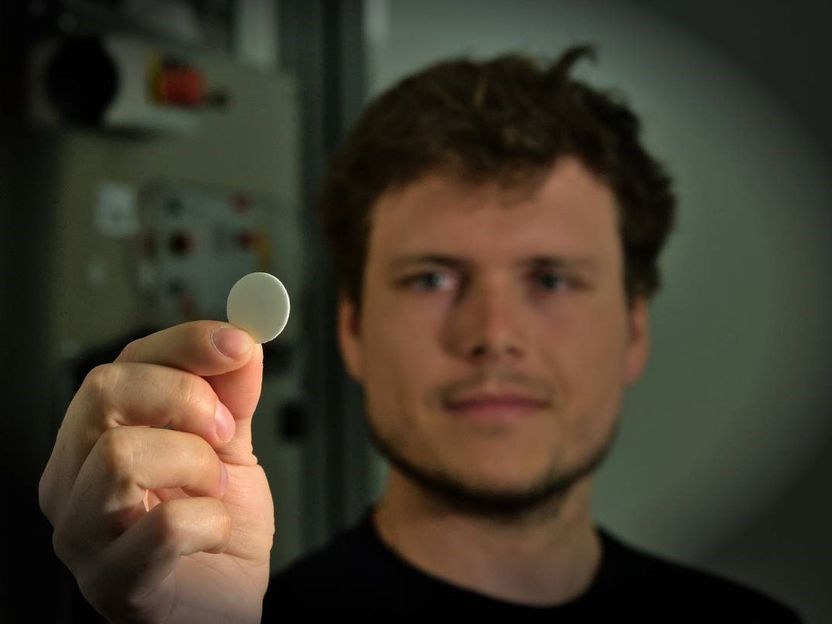Pills printed with the 3D printer
Production of personalized medication through 3D printing
Almost a third of the population in Germany needs to take medication on a daily basis. One in four of these people regularly takes three or more different types of medication at the same time. Various pills pile up in these patients’ pill dispensers for various days of the week. The correct dosage and intake of this medication can become a challenge, particularly for older people or those with cognitive impairments. Pills manufactured individually for patients could be the answer. These pills would contain all the required medication, thus reducing the number of pills to be taken in one day to just one. Scientists at Friedrich-Alexander-Universität Erlangen-Nürnberg (FAU) and the Bavarian Laser Centre (blz) are now researching a potential manufacturing process for such customized pills – 3D printing. They have now published their findings in the journal Additive Manufacturing.

Sebastian-Paul Kopp, who is a doctoral candidate at FAU and the blz, is responsible for the project for 3D printing of medication.
Max Gmelch, SAOT
Many of us are familiar with the concept of 3D printing from industry. It enables customized components and tools to be manufactured quickly from a wide range of materials. The process is already important in medicine, as it enables tailor-made prosthetics and implants, dental prosthetics and hearing aids to be produced for patients. But this is not all: Research is currently being carried out on how to manufacture medication using 3D printing methods. The advantages are obvious, since it not only means that various active ingredients can be combined, but the dosage can also be tailored to patients’ current daily requirements. Treatment could be come more individual, less complex and safer.
New layer, new active ingredient
Previous approaches concentrated on what is known as FDM printing (fused deposition modeling), where active ingredients are applied layer by layer with a nozzle rather like the cream on a cake. Using this method, it is not possible to produce fine structures within the pills. In a joint research project between FAU, the blz, University College London and the University of Santiago de Compostela, researchers have therefore developed a new method of manufacturing such pills. They started with three active ingredients in powder form including paracetamol and caffeine and mixed them with a carrier powder that does not contain any active ingredients. The ingredients are applied individually in thin layers and placed under a laser that melts them into a compact pill. “Our new manufacturing method uses gentle processes for the active ingredients and enables us to use conventional laser beam sources,” says Sebastian-Paul Kopp, who is responsible for leading the project. While the addition of special absorbent particles was previously necessary in order to use the laser energy in a controlled manner, this is no longer required with the FAU method. “Furthermore, we can not only adjust the combination of active ingredients for each pill, but also for each layer of a pill. This allows us to control the time when a particular active ingredient is released in the body,” explains Kopp.
A considerable amount of work still needs to be carried out to produce a customized pill and research is still in the early stages. However, one day our local pharmacies could be printing medication quickly and simply for millions of patients, tailored to match their requirements exactly. The foundations for this are currently being laid.
Original publication
Sebastian-Paul Kopp, Vadim Medvedev, Katja Tangermann-Gerk, Natalie Wöltinger, Richard Rothfelder, Fabian Graßl, Markus R. Heinrich, Patricija Januskaite, Alvaro Goyanes, Abdul W. Basit, Stephan Roth, Michael Schmidt; "Electrophotographic 3D printing of pharmaceutical films"; Additive Manufacturing, Volume 73




















































